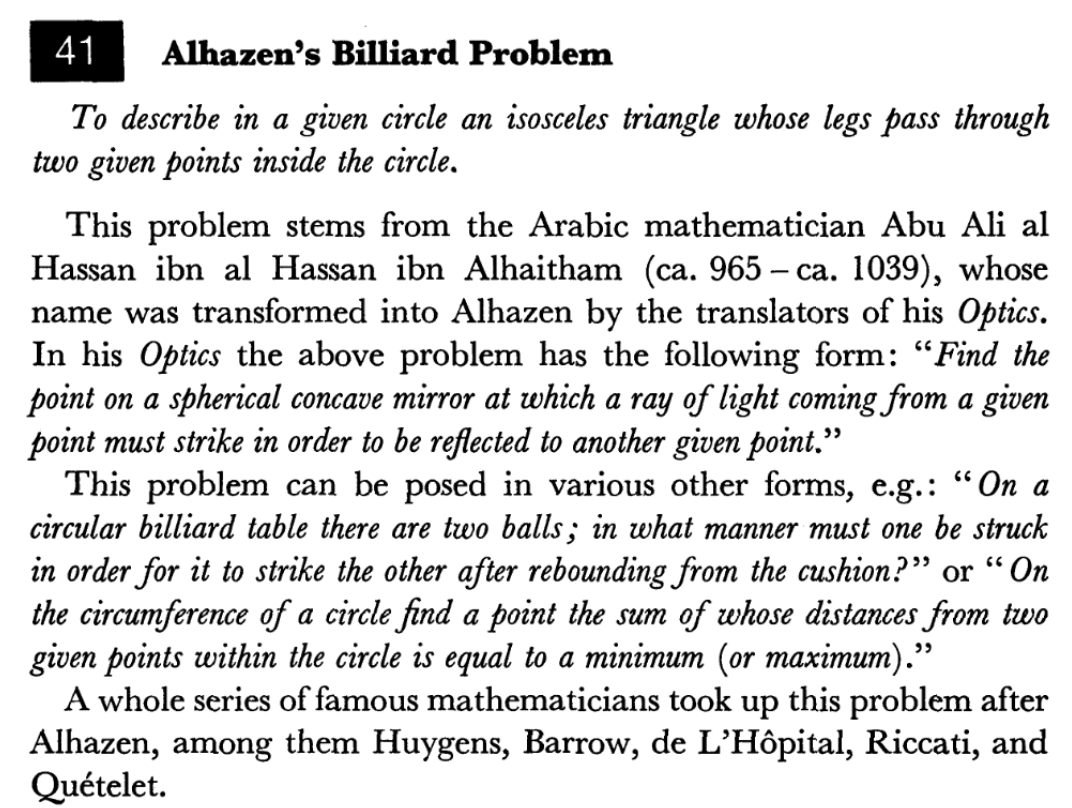E. T. Bell wrote in Men of Mathematics:
Though the idea behind it all is childishly simple, yet the method of analytic geometry is so powerful that very ordinary boys of seventeen can use it to prove results which would have baffled the greatest of the Greek geometers -- Euclid, Archimedes, and Apollonius.
I don't necessarily believe everything in the book, but this passage sounds plausible enough to make me wonder.
Are there any good examples of an open problem from antiquity which seemed inaccessible, but was later easily solved by converting it to the Cartesian plane?

